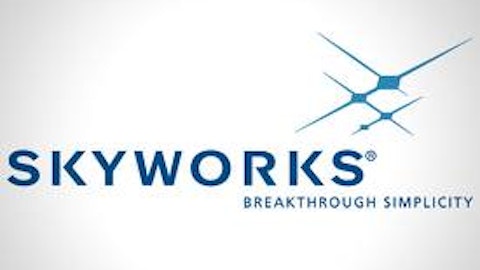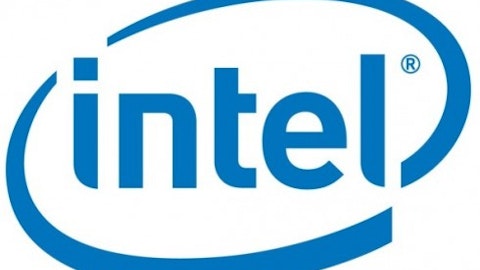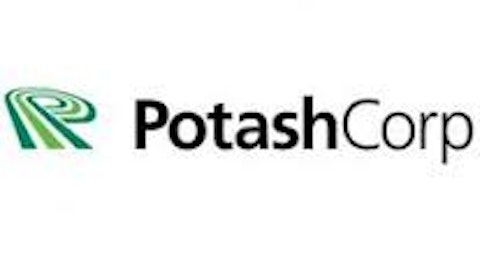 What happens to a forest after a forest fire?
What happens to a forest after a forest fire?
More often than not, it grows back even healthier than before. Trees damaged in a fire typically die within two years, and dead vegetation falls to the ground. The remaining snags provide a habitat for wildlife and eventually fall to the forest floor, becoming a long-term source of nutrients. It’s a process of creative destruction.
Financial markets can behave the same way. They can crash and burn, clearing out irrational excess in order to build a foundation of sustainable growth. Two prime examples: the tech bubble of the late 1990s and the so-called commodities supercycle.
“Technology is here to stay.”
This is one of the most ridiculous statements I’ve heard uttered by investors as they bid up the likes of Pets.com and CMGI to ridiculous, stratospheric prices. Along the way, the stocks of many great long-term companies were lifted as well. One of my favorite “Forever Stocks,” chip-making giant Intel Corporation (NASDAQ:INTC), has been punished for over a decade, thanks to guilt by association.
But what happened after the crash is that investors are able to buy shares of a great company that consistently makes money and rewards its shareholders with a rising dividend. Best of all, the shares can be purchased at a 36% discount to the price-to-earnings (P/E) ratio of the S&P 500 index.
After The Fire
The overhyped commodities supercycle has experienced a similar rise and fall. The rise was twofold. First, as emerging markets became more developed economically and their citizens became more affluent, they ate more. Food producers needed to produce more and in the meantime, commodity prices on the in demand agricultural products went up. This nearly decade-long chart tells the story.
The second cause of rising commodity prices was fueled by the decade-long bear market in equities. Investors needed to go somewhere. The commodity train was leaving the station, and they hopped on. Then the train wrecked, as it always does during any type of investment mania or bubble, and like the tech bubble, many high-quality companies were swept up by the rising tide and mercilessly pummeled.
I’ve found two ideas that spell profit for investors. Best of all, these companies manufacture an essential component to agricultural production: fertilizer. You really can’t farm without it. It doesn’t matter whether commodity prices are in the clouds or the toilet. People have to eat, farms have to grow food, and fertilizer is needed, regardless.
The 900-Pound Gorilla
Potash Corp./Saskatchewan (USA) (NYSE:POT) is the world’s biggest diversified fertilizer company and one of the world’s largest producers of potash. Estimates peg the company’s contribution right at 20% of global capacity of potash production.
During the decade long commodities supercycle party, Potash Corp./Saskatchewan (USA) (NYSE:POT) definitely made hay while the sun was shining. From 2004 to 2012, earnings per share grew at a compound annual rate of 30% while the dividend grew 24%.

Based on how well the company took advantage of the macro trend, it’s no wonder investors bid the share price up to lofty heights. But that was then.
With the realization that rapid growth in emerging markets would eventually slow, the financial markets took their toll. The stock is 60% off of its pre-financial crisis highs and over 30% off of its 52-week high. But there’s another issue compounding the problem.
Recently, the largest Russian potash producer, OAO Uralkali, said it would begin selling its own potash rather than using a marketing group model as it had in the past. The company also said that it would focus on volume over price. This announcement has caused massive confusion in the potash market and pummeled the stock prices of potash producers. So, if prices are going down and competition is heating up, should you own shares of Potash Corp./Saskatchewan (USA) (NYSE:POT)? Yes.
Aside from the two major influences on the potash industry, Potash Corp./Saskatchewan (USA) (NYSE:POT) is an incredibly well-run company. Shares trade at around $29.50 with a forward P/E ratio of 11.9 and an attractive dividend yield of 4.7%. The financials are impressive, too. The long-term debt-to-capitalization ratio sits at an extremely comfortable 25%, and return on equity (ROE) is a strong 23%.
The company still sees growth despite the tough environment projecting global potash shipments to rise 7.8% to 55 million tons from last year. It’s obvious that Potash Corp./Saskatchewan (USA) (NYSE:POT) prepared for the famine during the feast.
Diamond In A Garbage Can?
While Potash is a prime example of a large market leader trading at a deep discount in a tough environment, Intrepid Potash, Inc. (NYSE:IPI) is a smaller player hurt by macro factors and limited options. But that’s not always a bad thing for smart investors.

It’s obvious that Intrepid caught just the tail end of the commodities supercycle.
Formed in 2000, the company was put together as roll-up to consolidate smaller potash producers in the U.S. Over the past eight years, its output has supplied 1.6% of annual global potassium consumption — not too impressive compared with Potash Saskatchewan ‘s 9.3% global share. However, Intrepid Potash, Inc. (NYSE:IPI) supplies 9.3% of annual U.S. consumption — not bad for a 13-year-old company with just under $1 billion in market capitalization.
Whereas Potash Corp./Saskatchewan (USA) (NYSE:POT) is a whale with a diversified business, Intrepid Potash, Inc. (NYSE:IPI) is a smaller catch that offers value and opportunity. While a young company, Intrepid has no long-term debt. Shares trade at around $12.30, and there’s no dividend. Not too exciting. But the stock also trades right at its tangible book value (the value of all of the company’s physical assets). In 2012, earnings per share were $1.16 while projections for this year call for 56 cents a share. That’s a significant slowdown but still earnings-positive.
Intrepid Potash, Inc. (NYSE:IPI) looks like a classic takeover candidate, with halfway decent financials and worthwhile market share in its particular sector. Disruption in a sector usually results in at least some consolidation. Being a smaller player, Intrepid Potash, Inc. (NYSE:IPI) would be a target. A bigger operator could gain significant U.S. market share for just a modest premium, 20% to 30%. But what seems like a modest premium could be highly lucrative to investors at the stock’s current level.
Risks to consider: As discussed earlier, the resulting bear market in stocks after a sector bubble bursts could last awhile and usually, they last longer than an average investor thinks it will. Stock selection and mental preparedness is essential. Potash Saskatchewan is the The Coca-Cola Company (NYSE:KO) of the fertilizer business. Its substantial dividend yield, strong market position and reasonable valuation provide the necessary ballast. Intrepid Potash’s upside as a consolidation candidate offsets the risk somewhat, but you shouldn’t own a stock based on takeover speculation without an exit strategy should the acquisition fail to materialize.
Action to Take –> The potash industry may be in disarray due to pricing pressure, so this might be the best time to buy the stocks of those companies. Potash Saskatchewan ‘s position as the market leader and strong operating history make it a natural choice. With market stabilization and consistent execution, shares of Potash Saskatchewan should have a 12-month price target of $38. That would mean that the P/E would only have to rise to 15 or so. Factoring in the 4.75% dividend yield, the result would be a total return of 36%. As an ideal acquisition target, shares of Intrepid Potash, Inc. (NYSE:IPI) offer value at their tangible book value: considering a 25% premium, a reasonable takeout price of $15.
P.S. — Stocks like Potash Saskatchewan are similar to a special group of securities we call “Forever Stocks.” These are stocks solid enough stocks to buy, forget about and hold — “Forever.” To learn more about these stocks — including some of their names and ticker symbols — click here.
– Adam Fischbaum
Warren Buffett’s Top 5 Stocks
Buffett’s firm, Berkshire Hathaway, holds dozens of stocks. But these five make up 75% of its portfolio… worth $65 billion. Click here to get Buffett’s top 5 stocks plus his 16 latest buys, FREE





